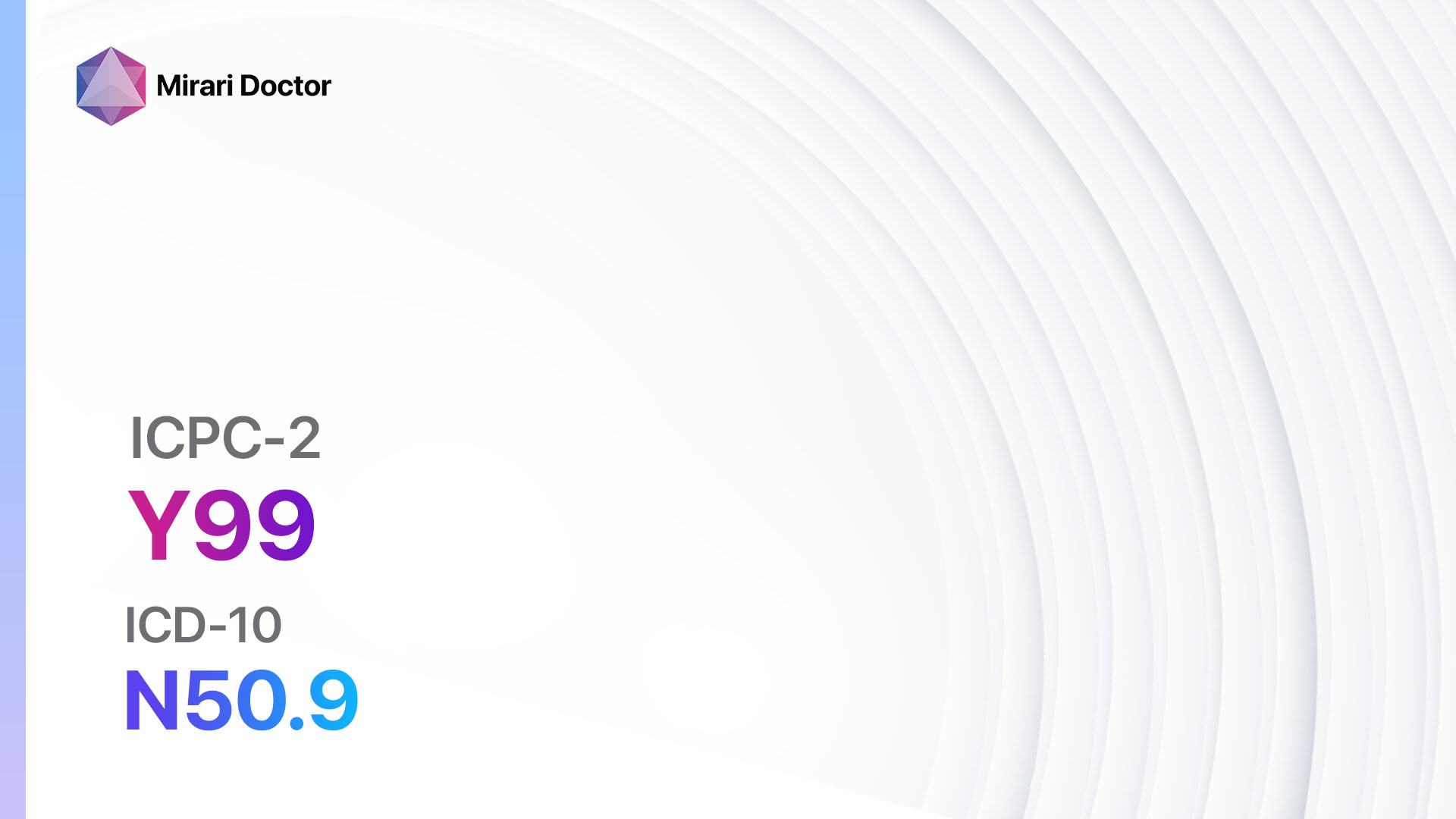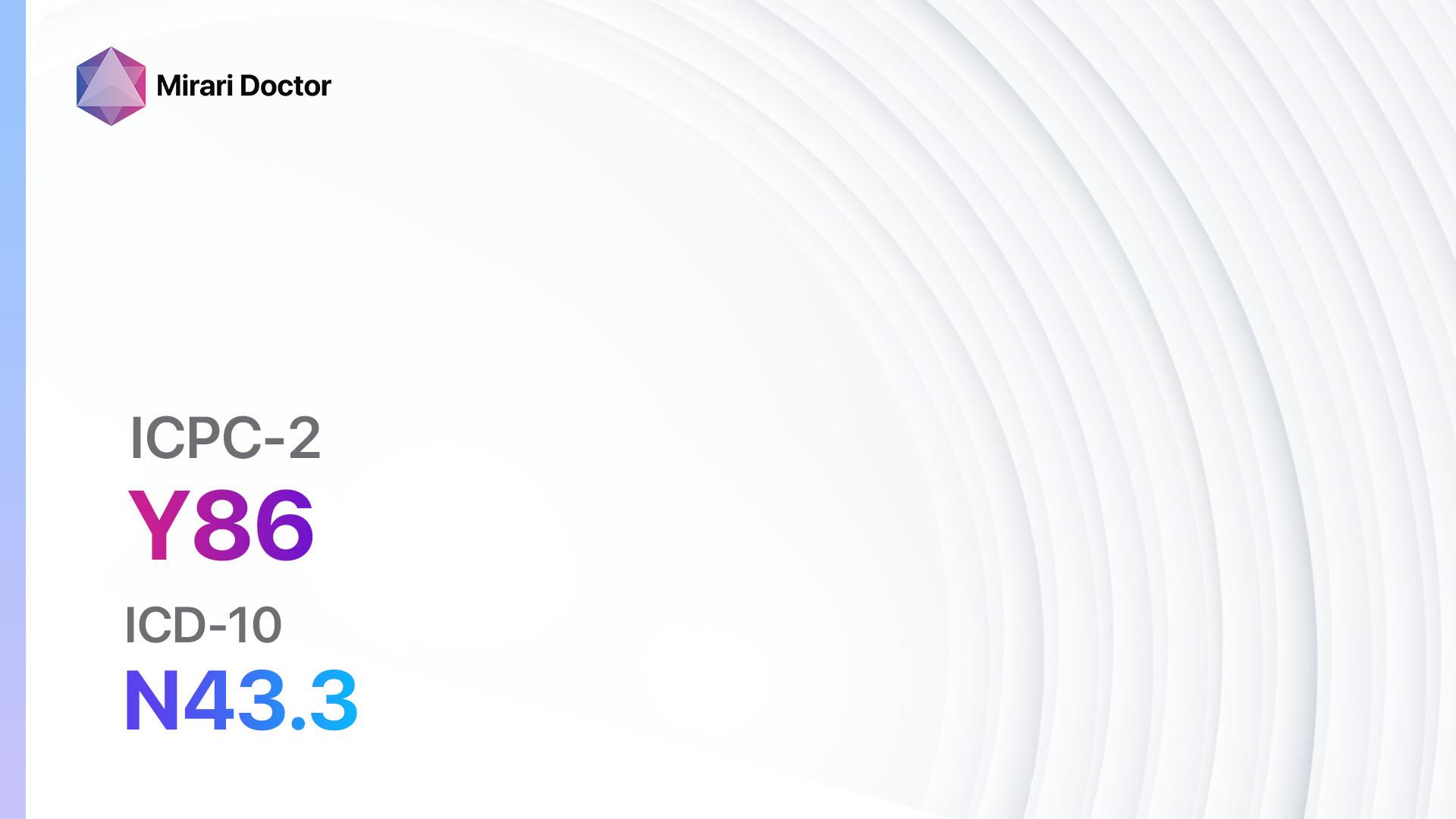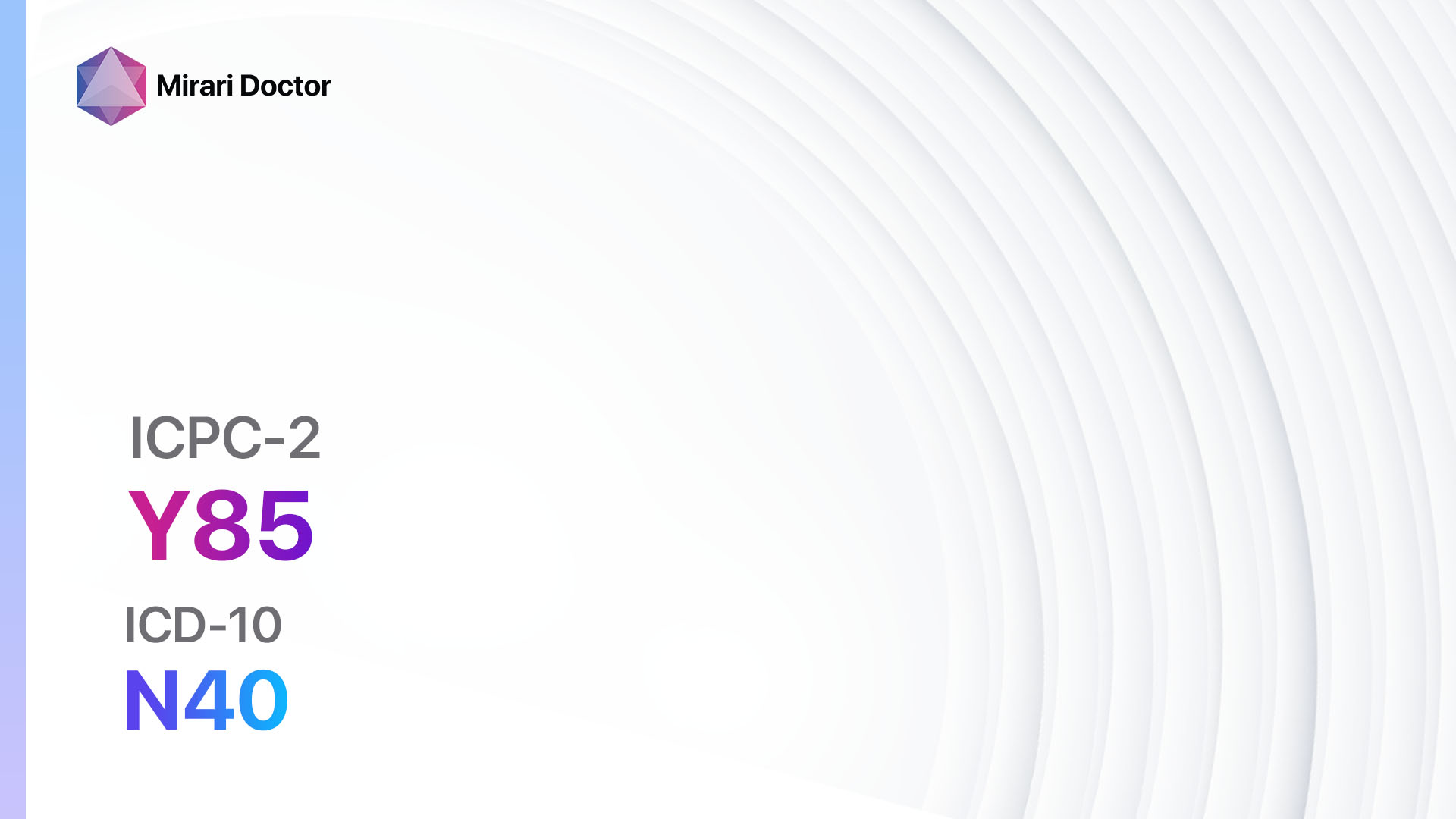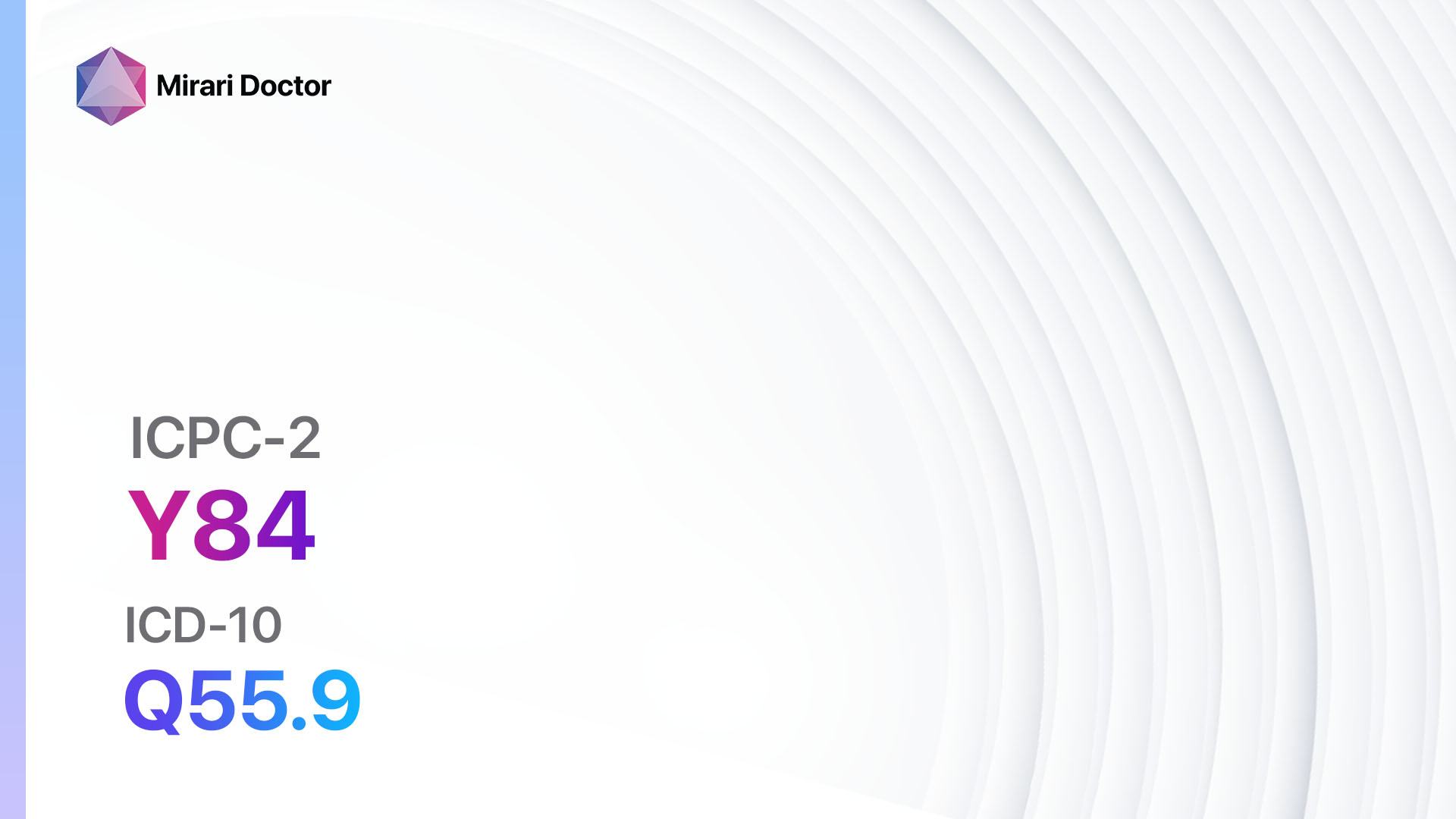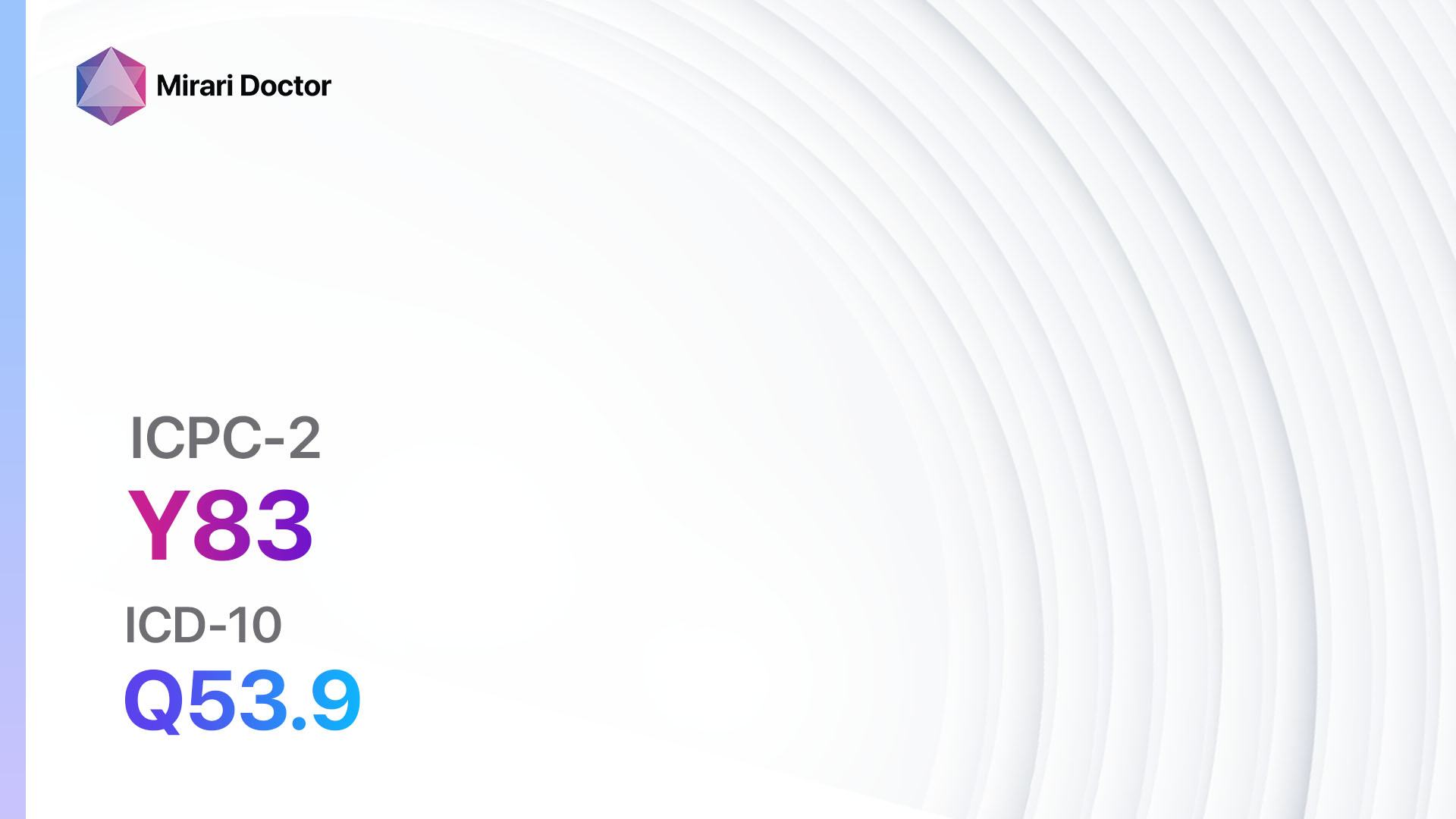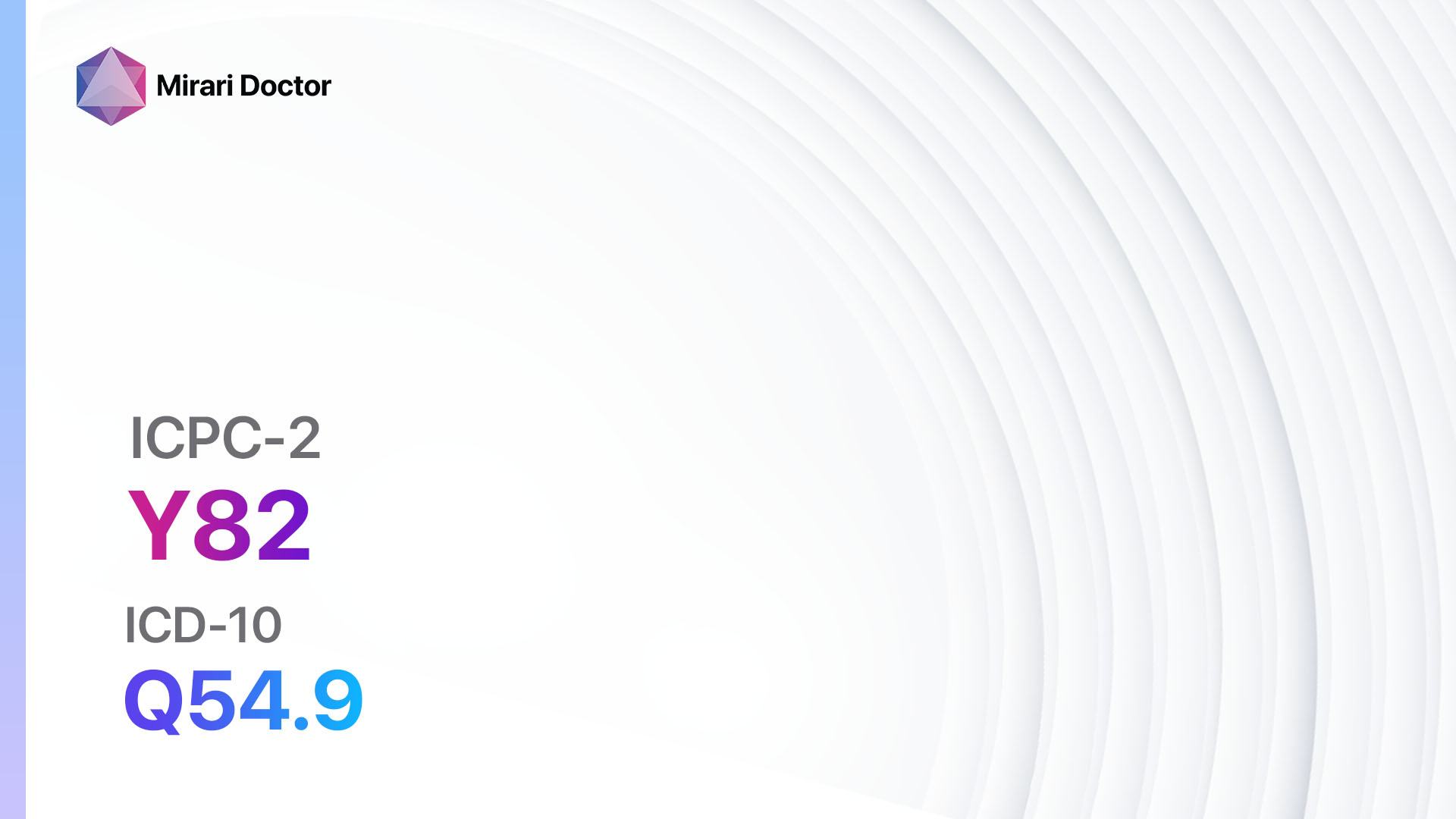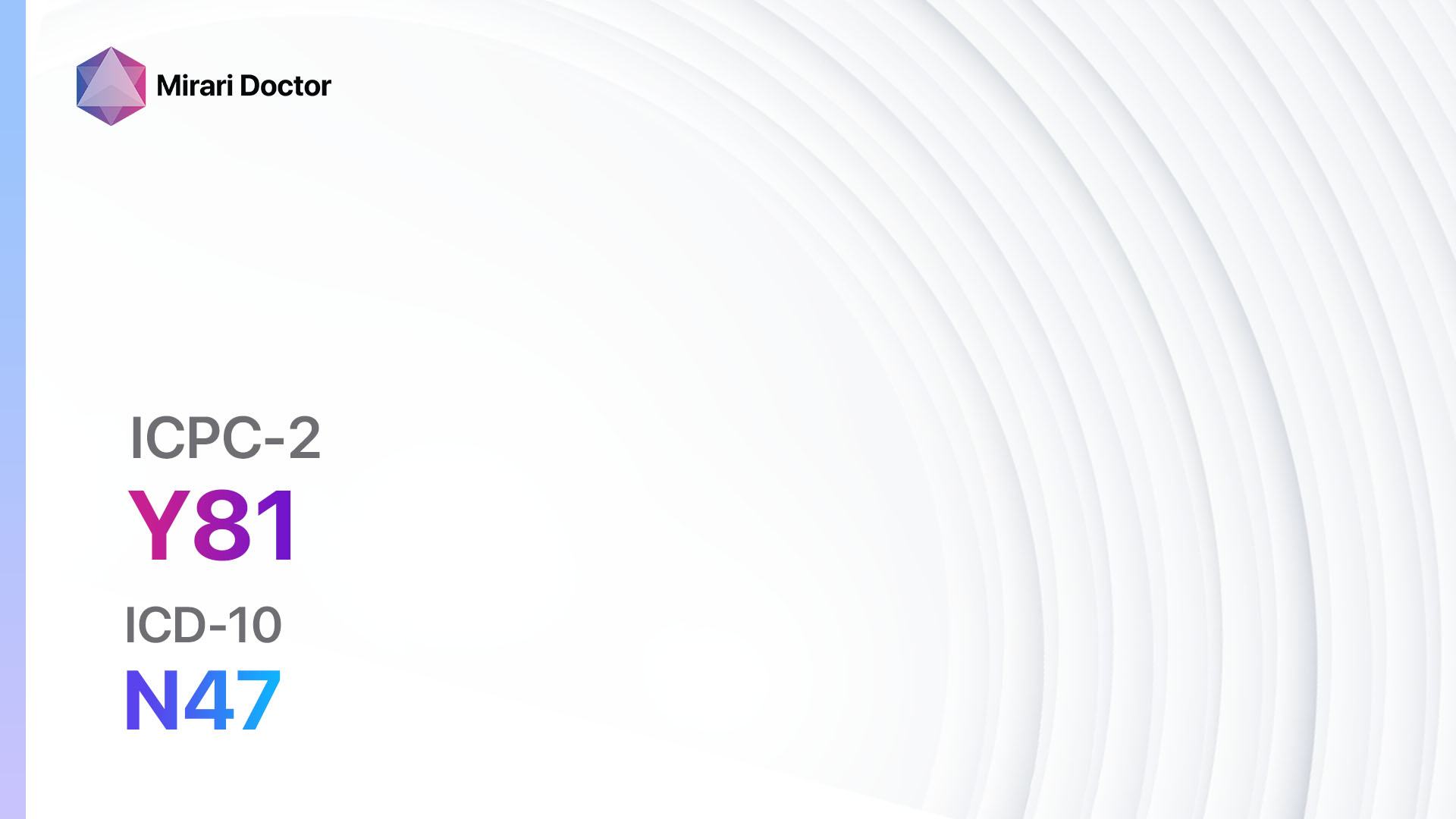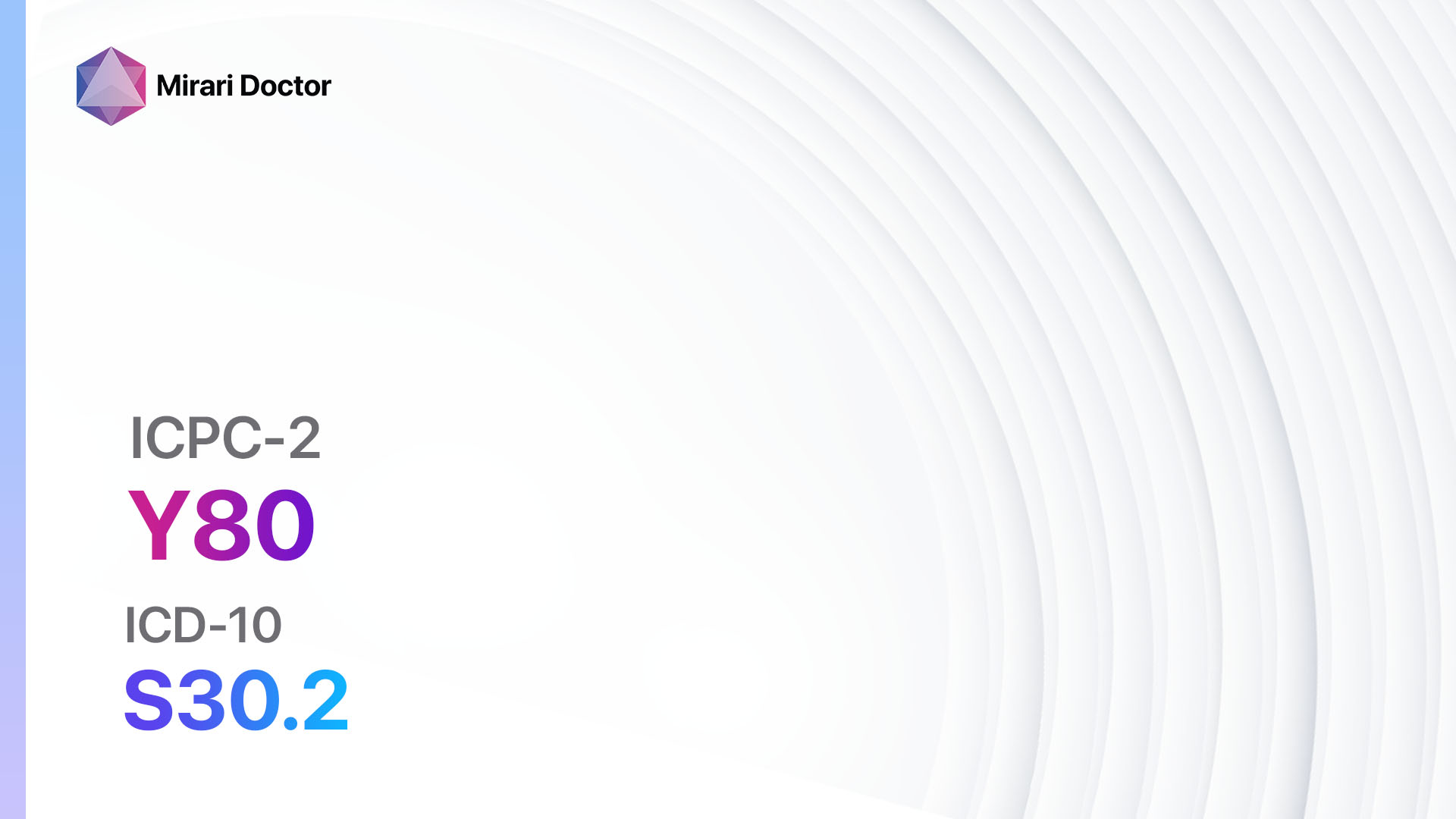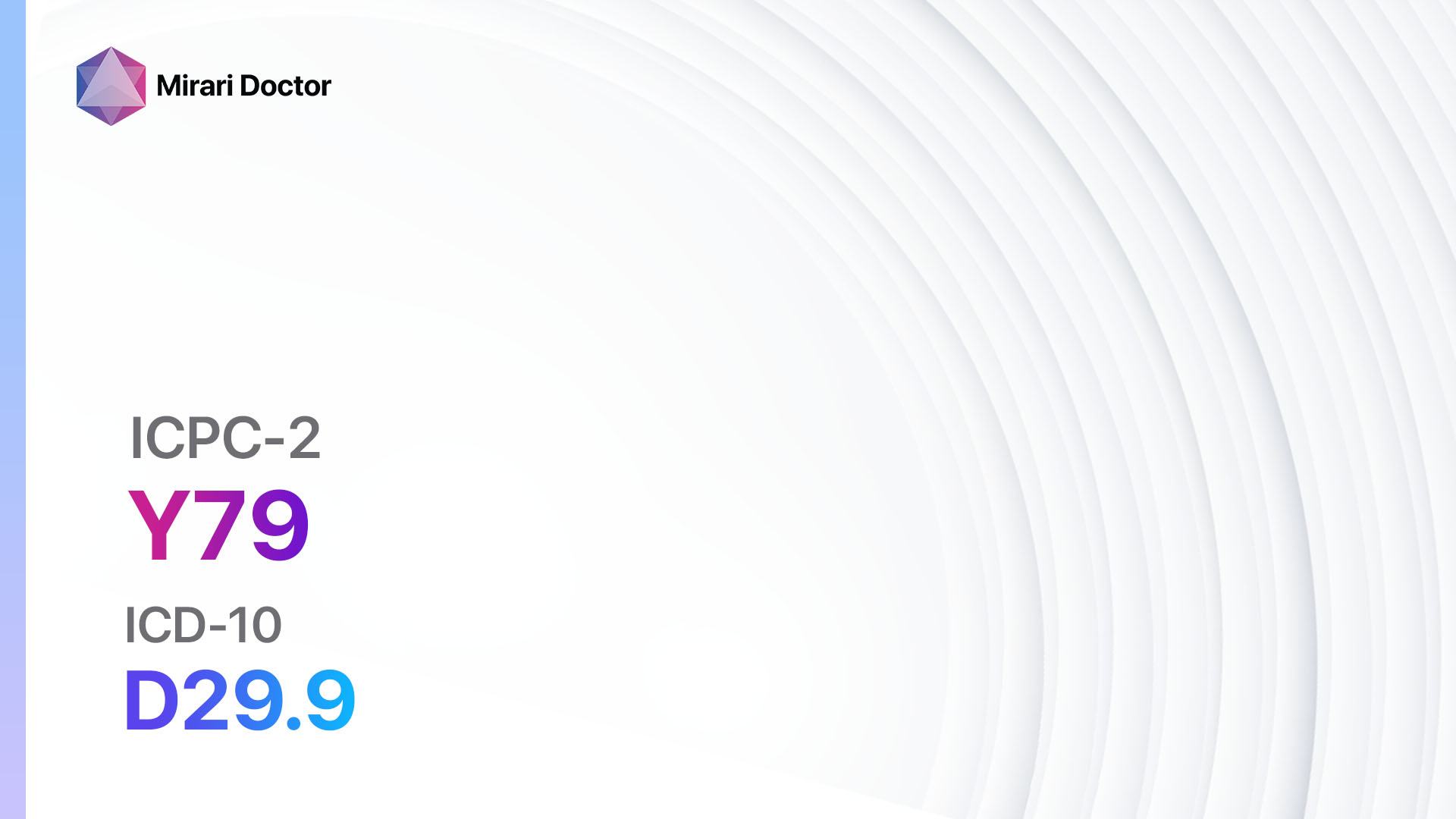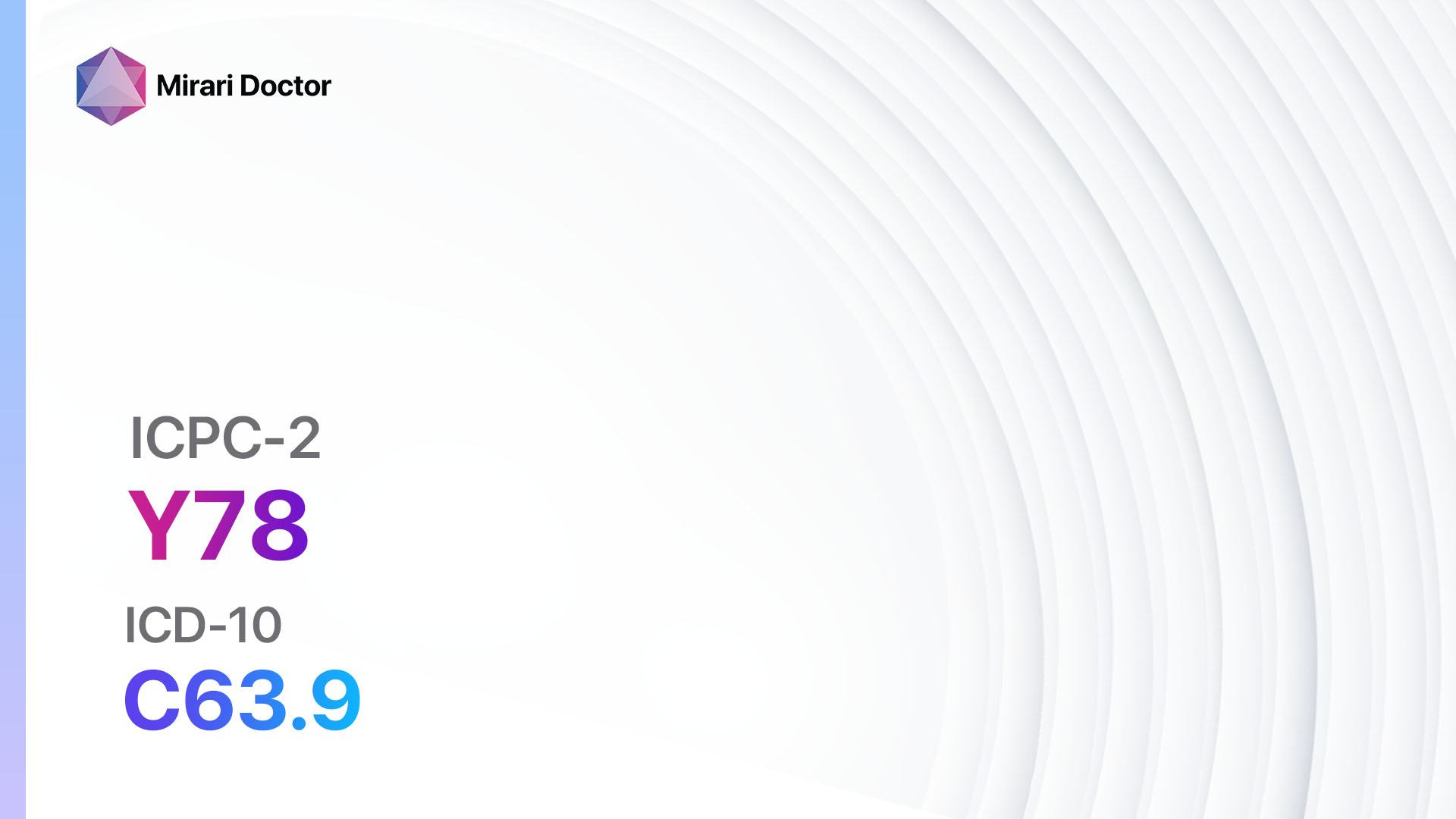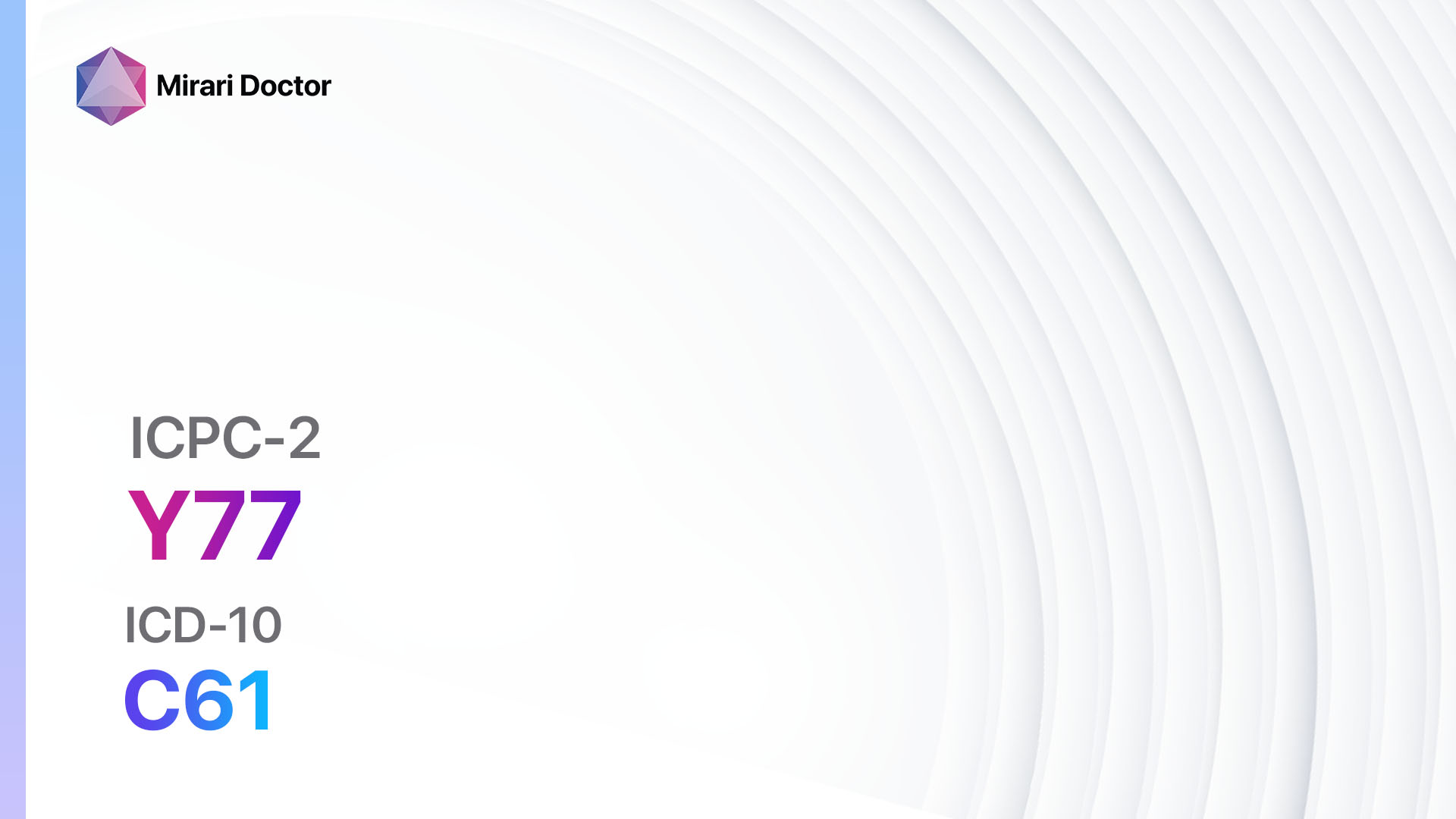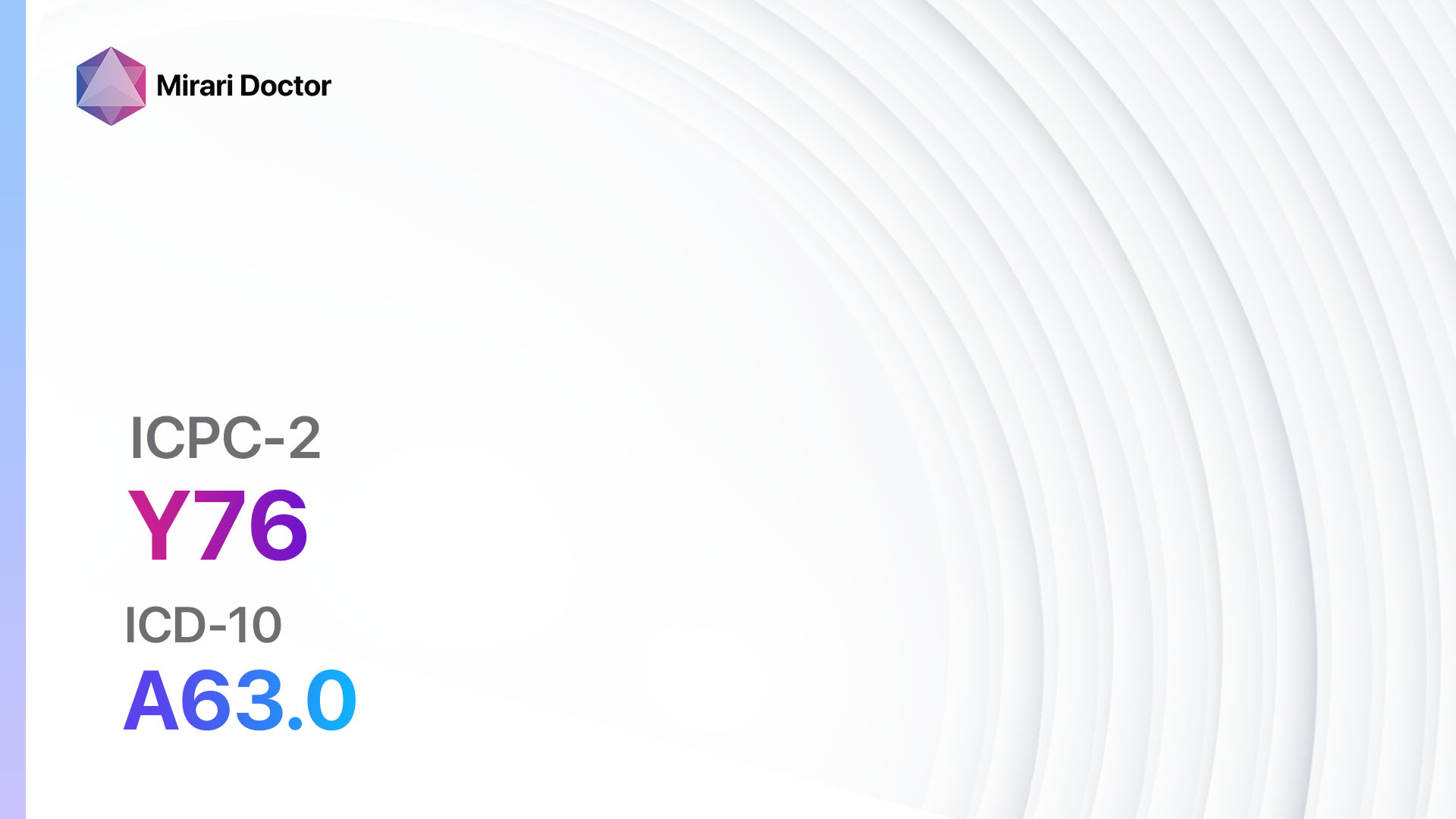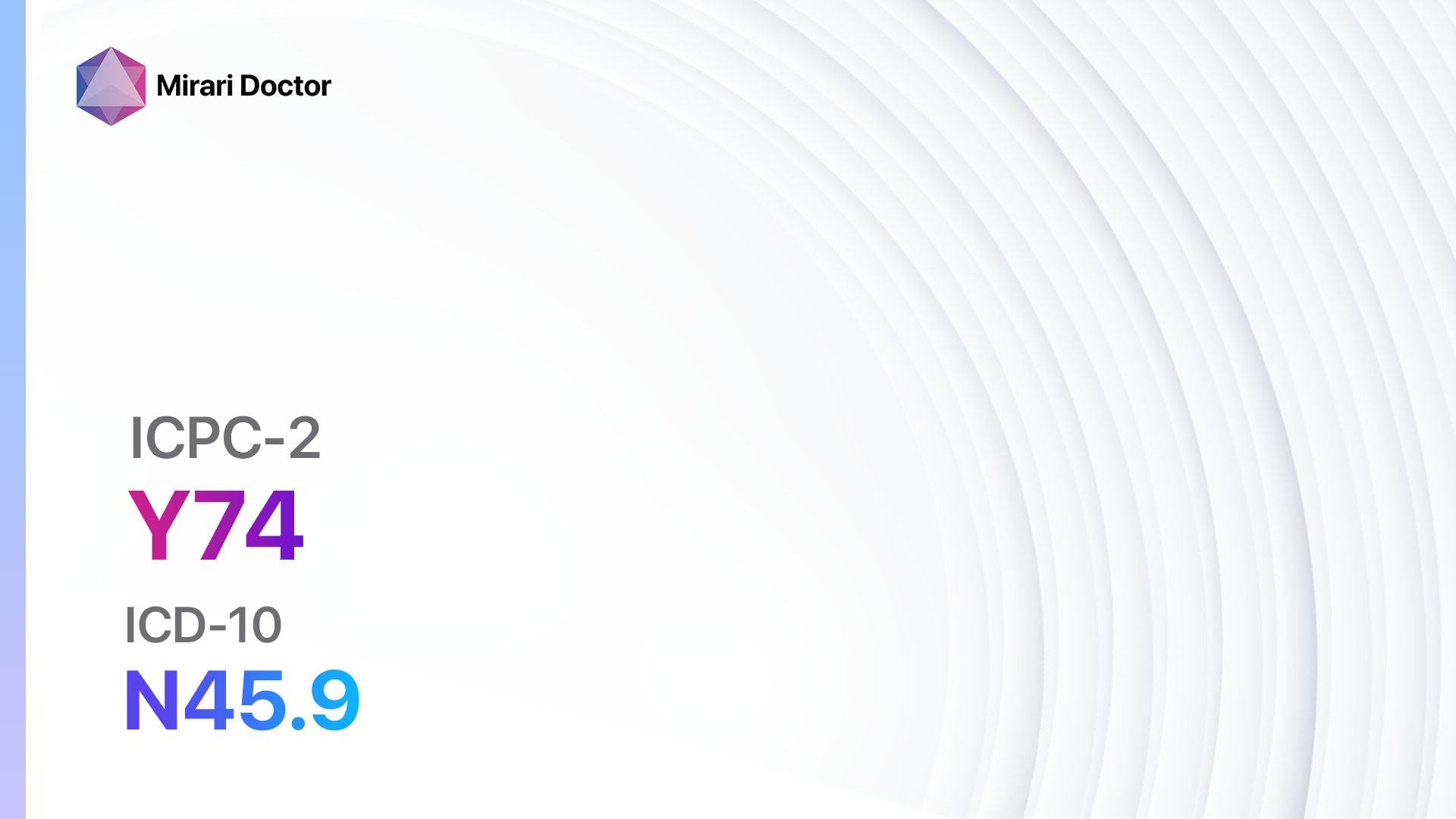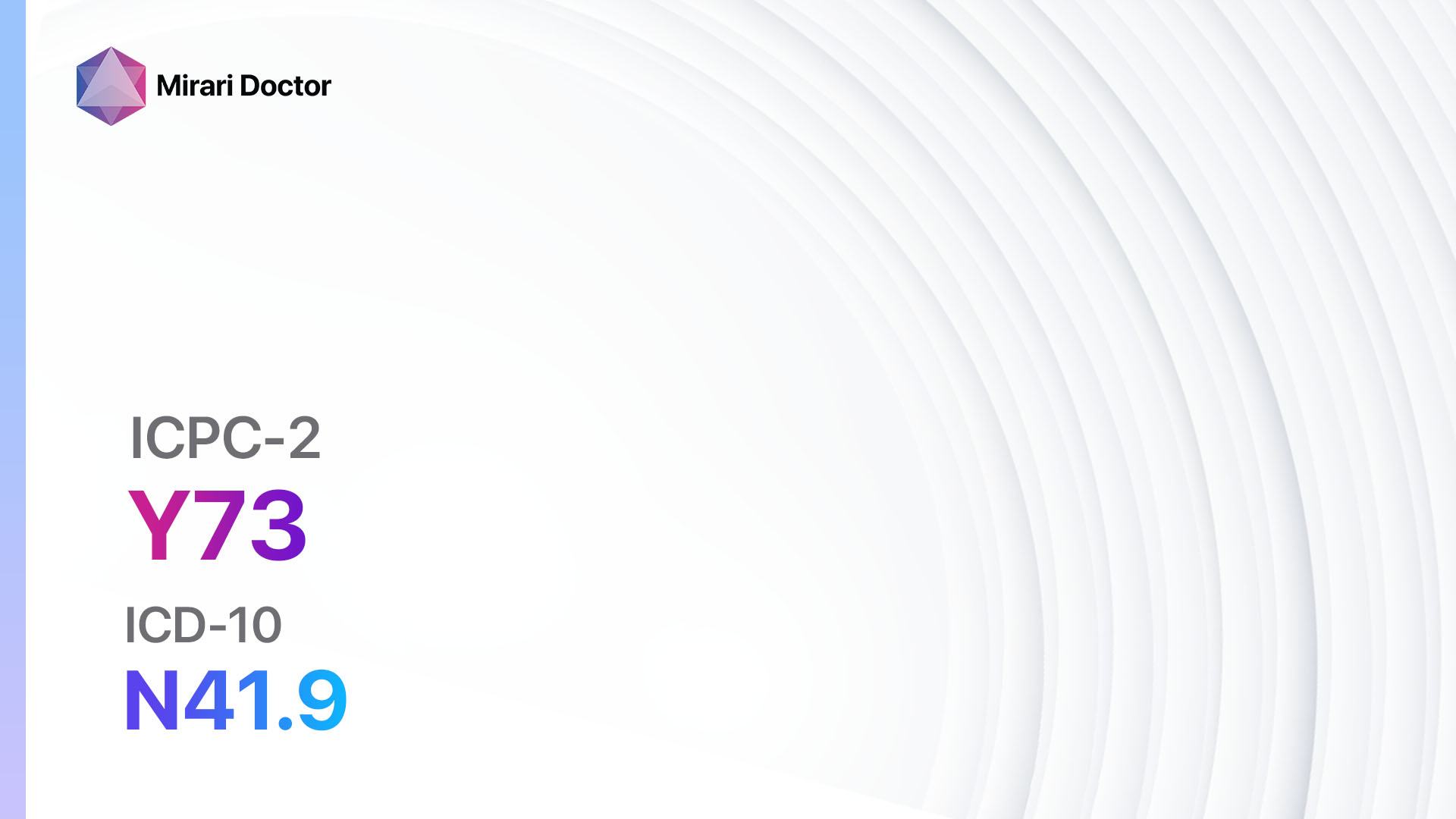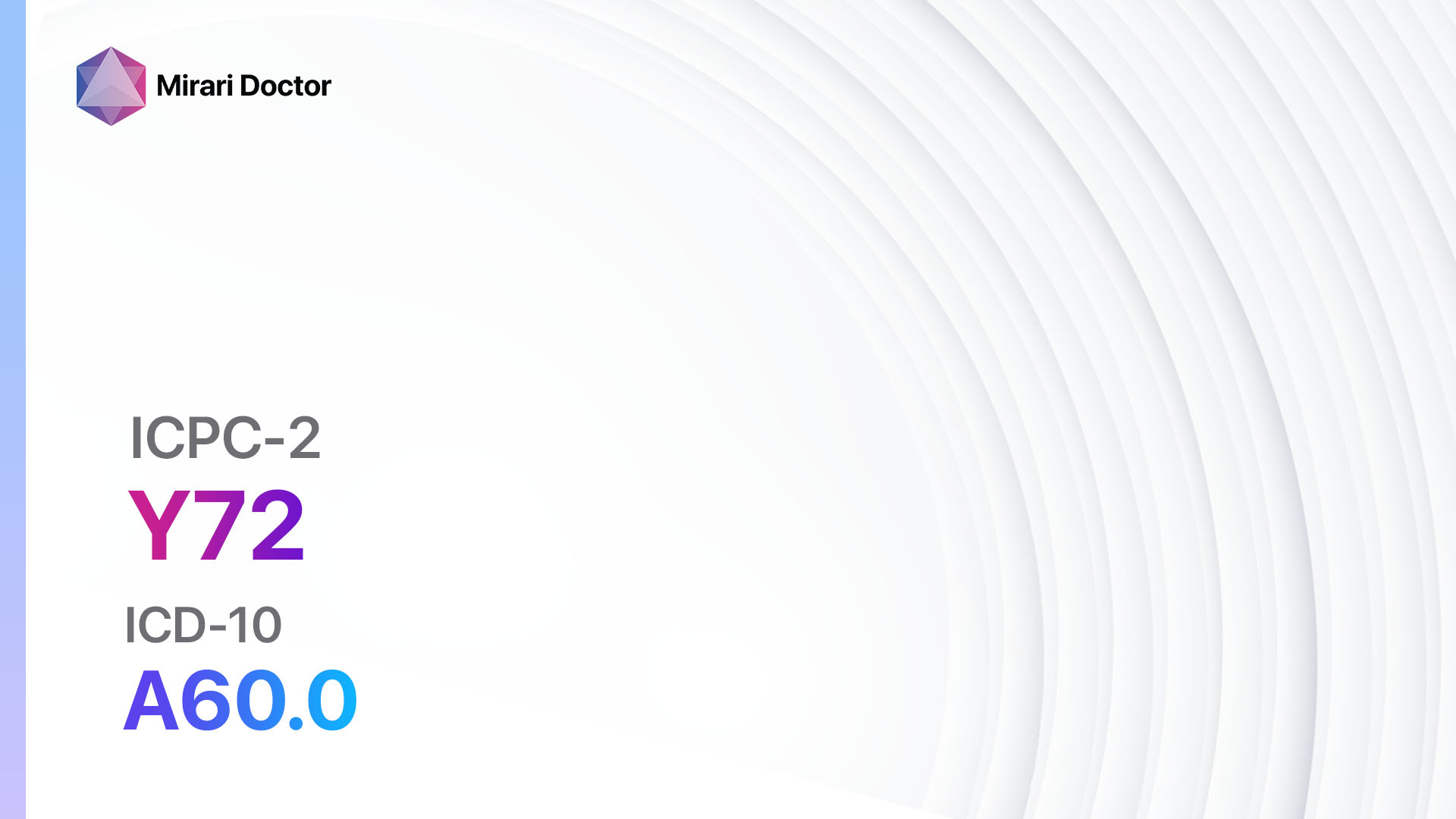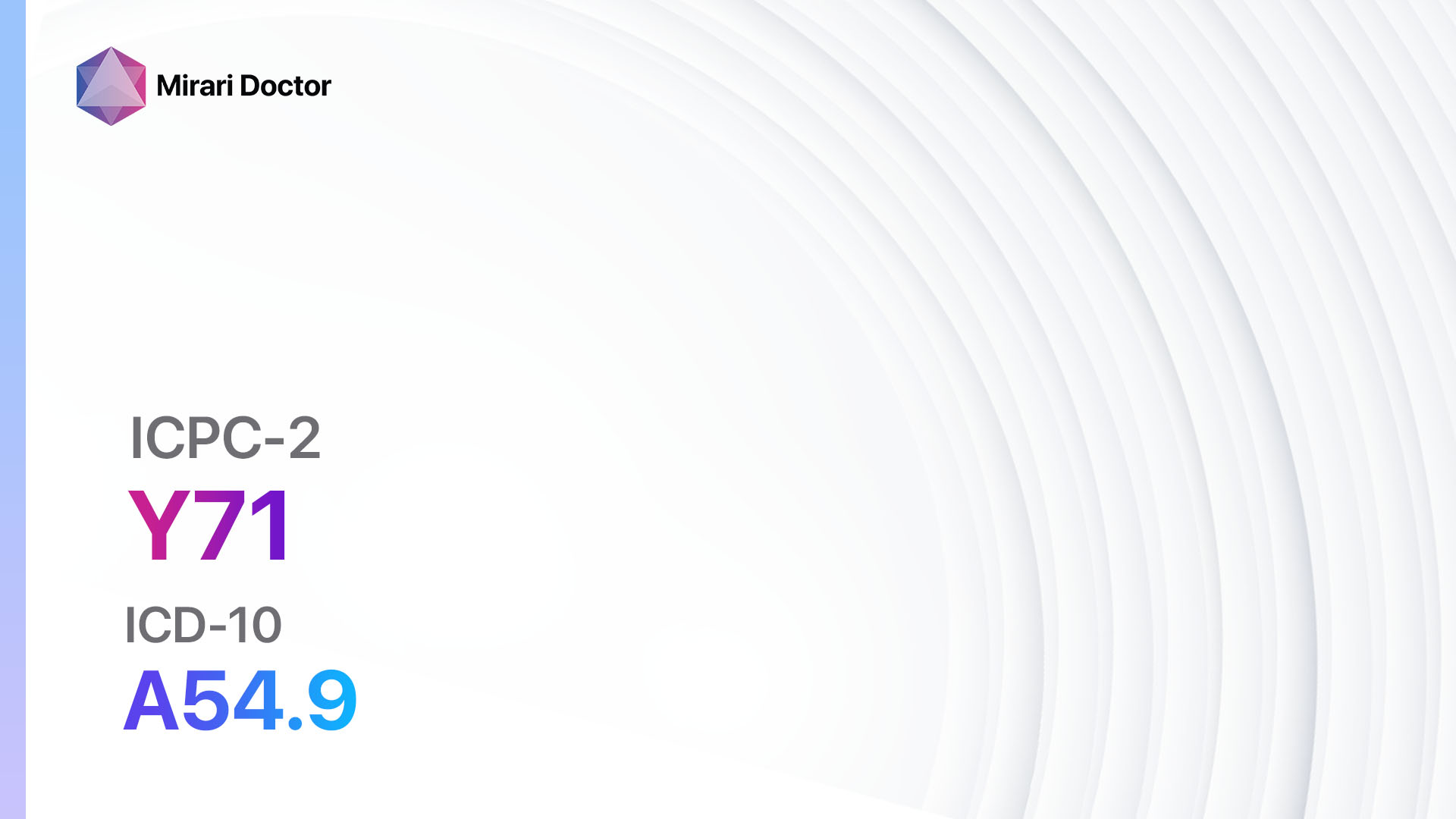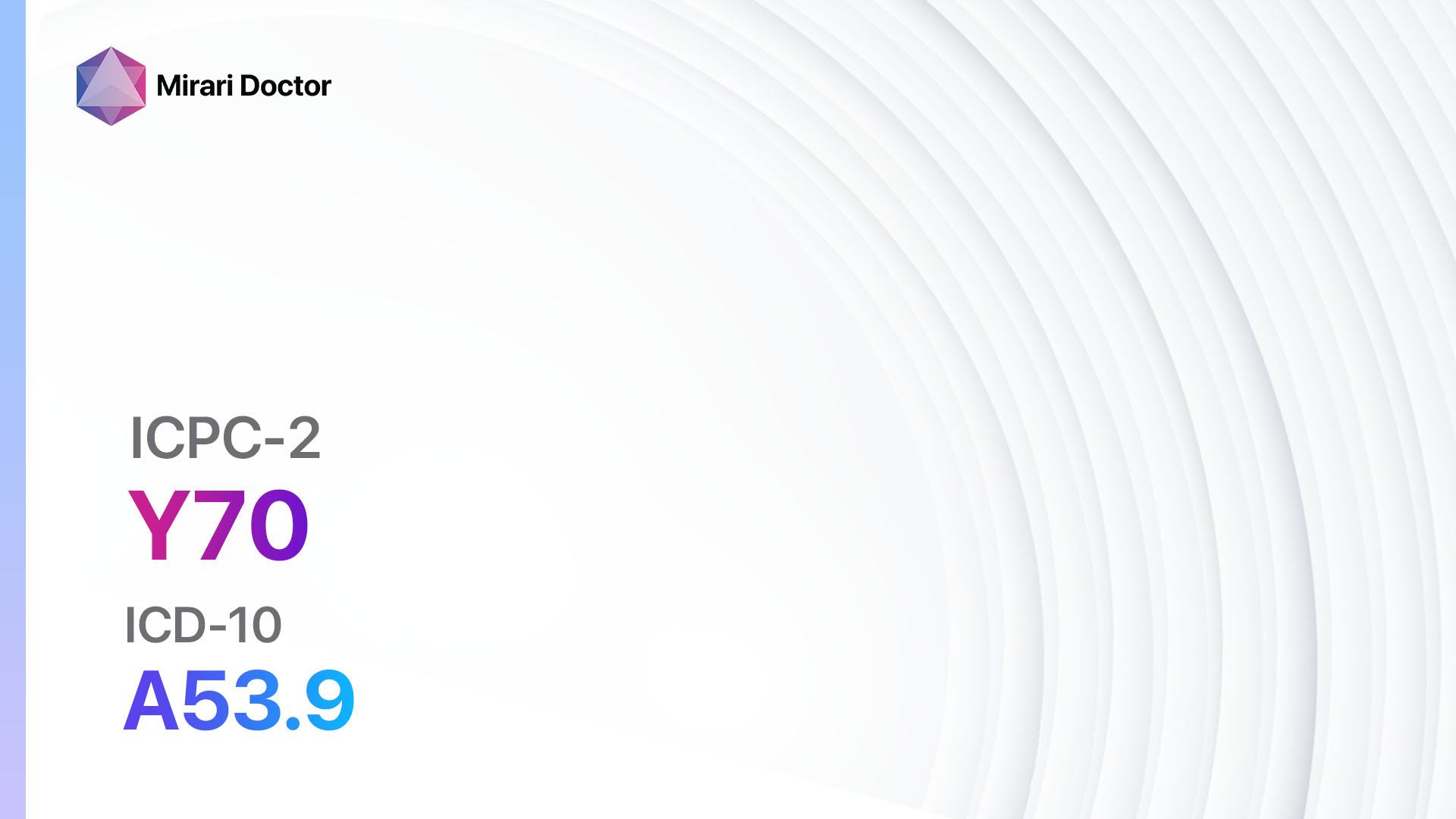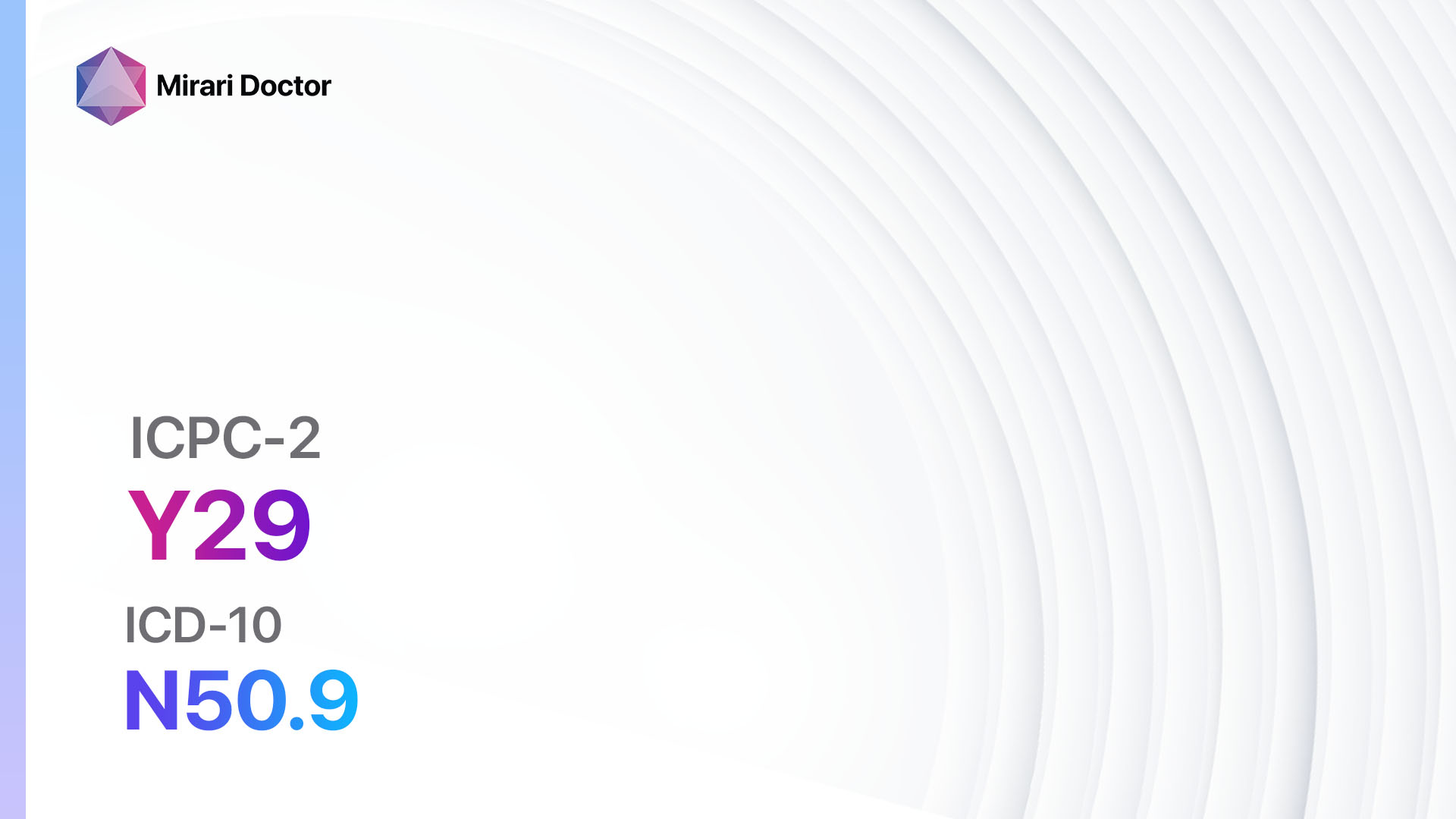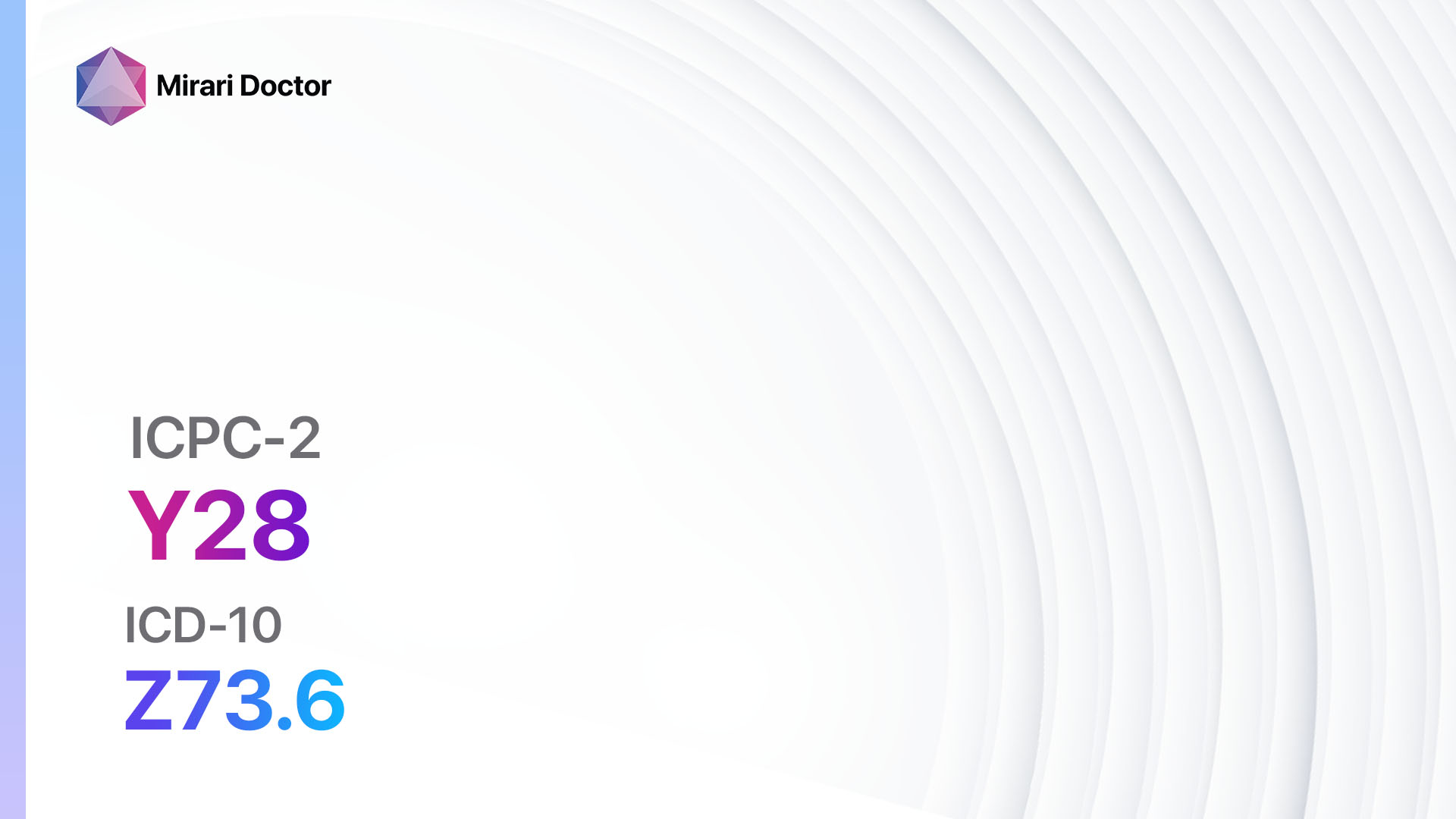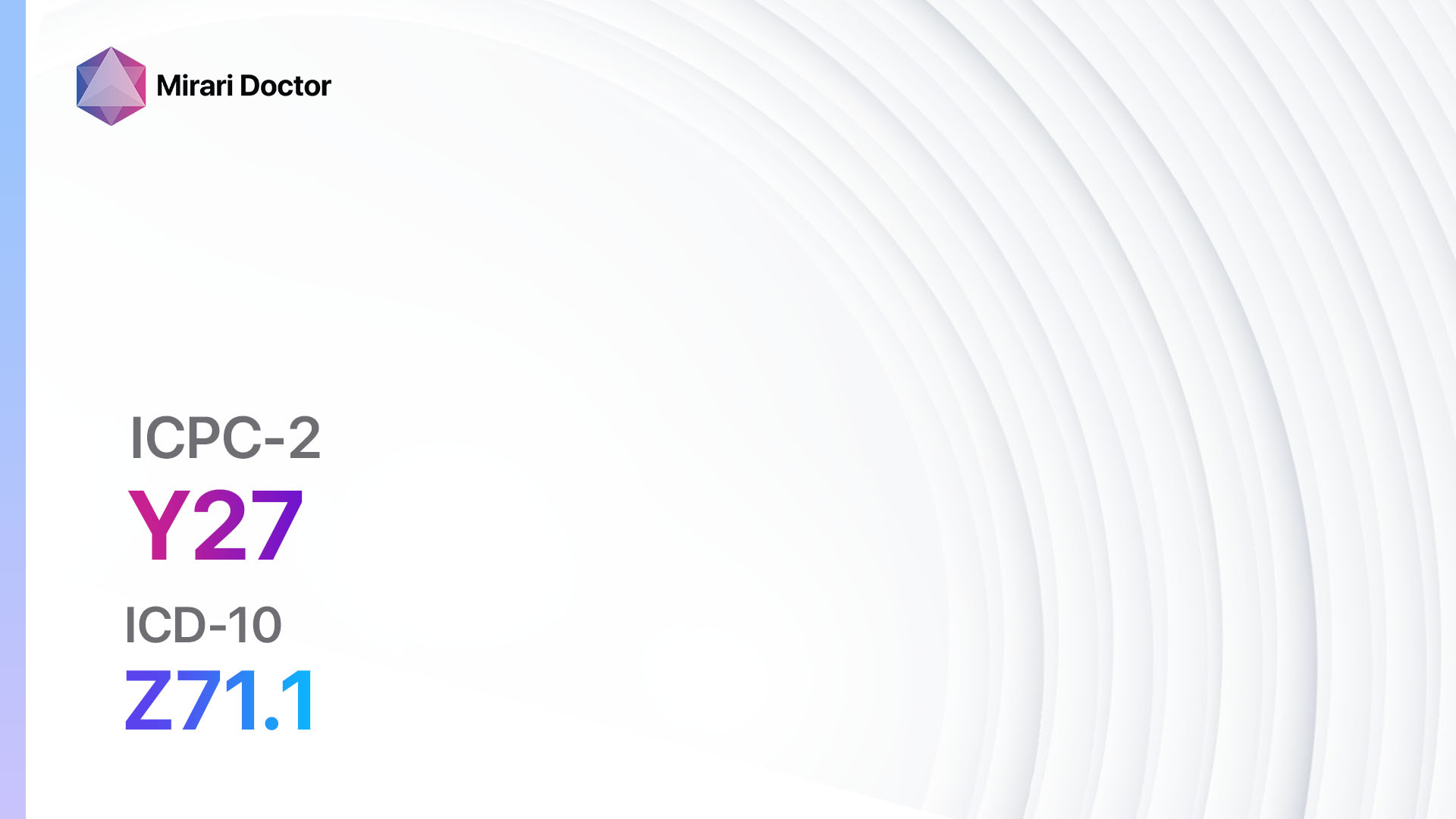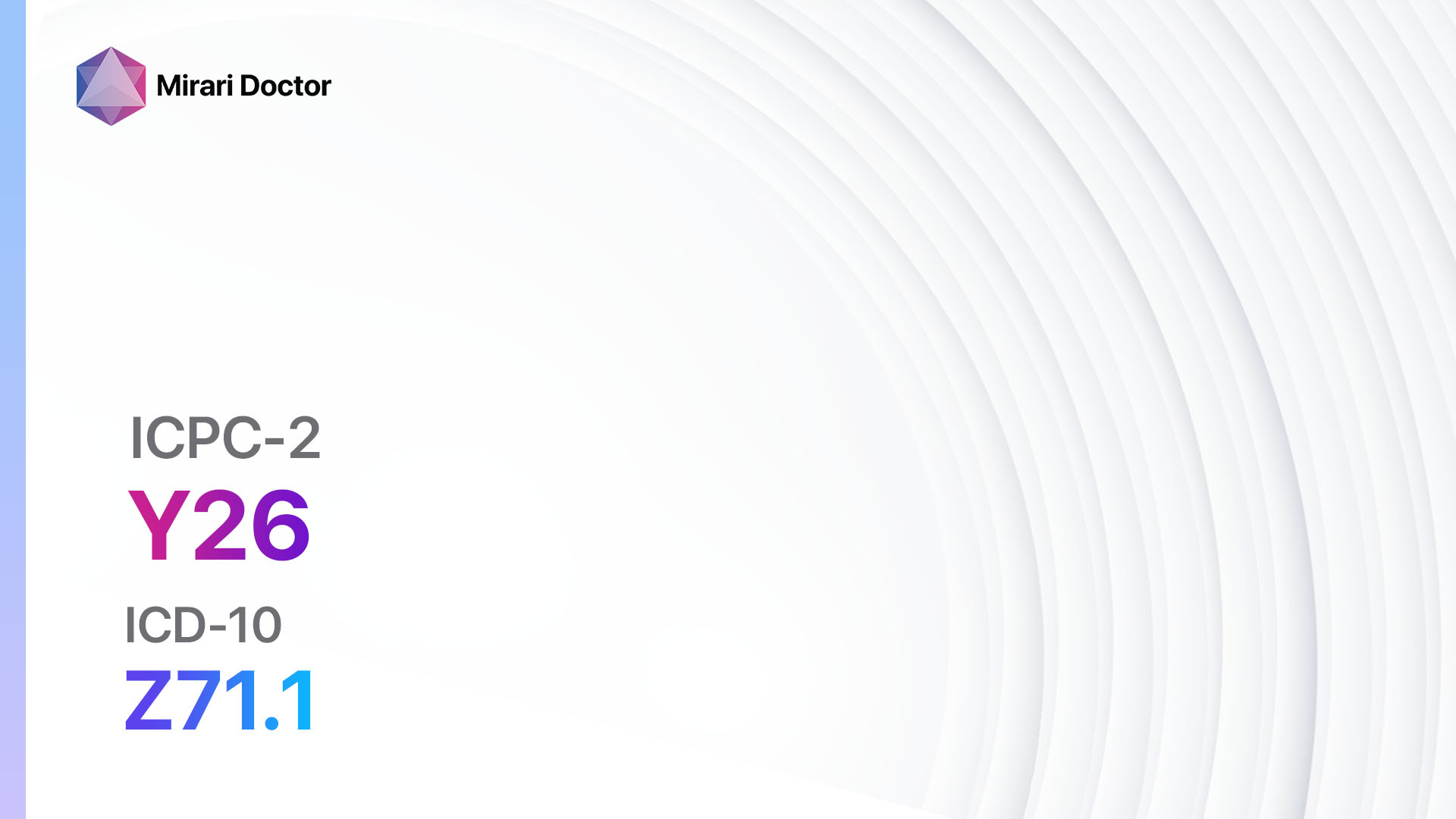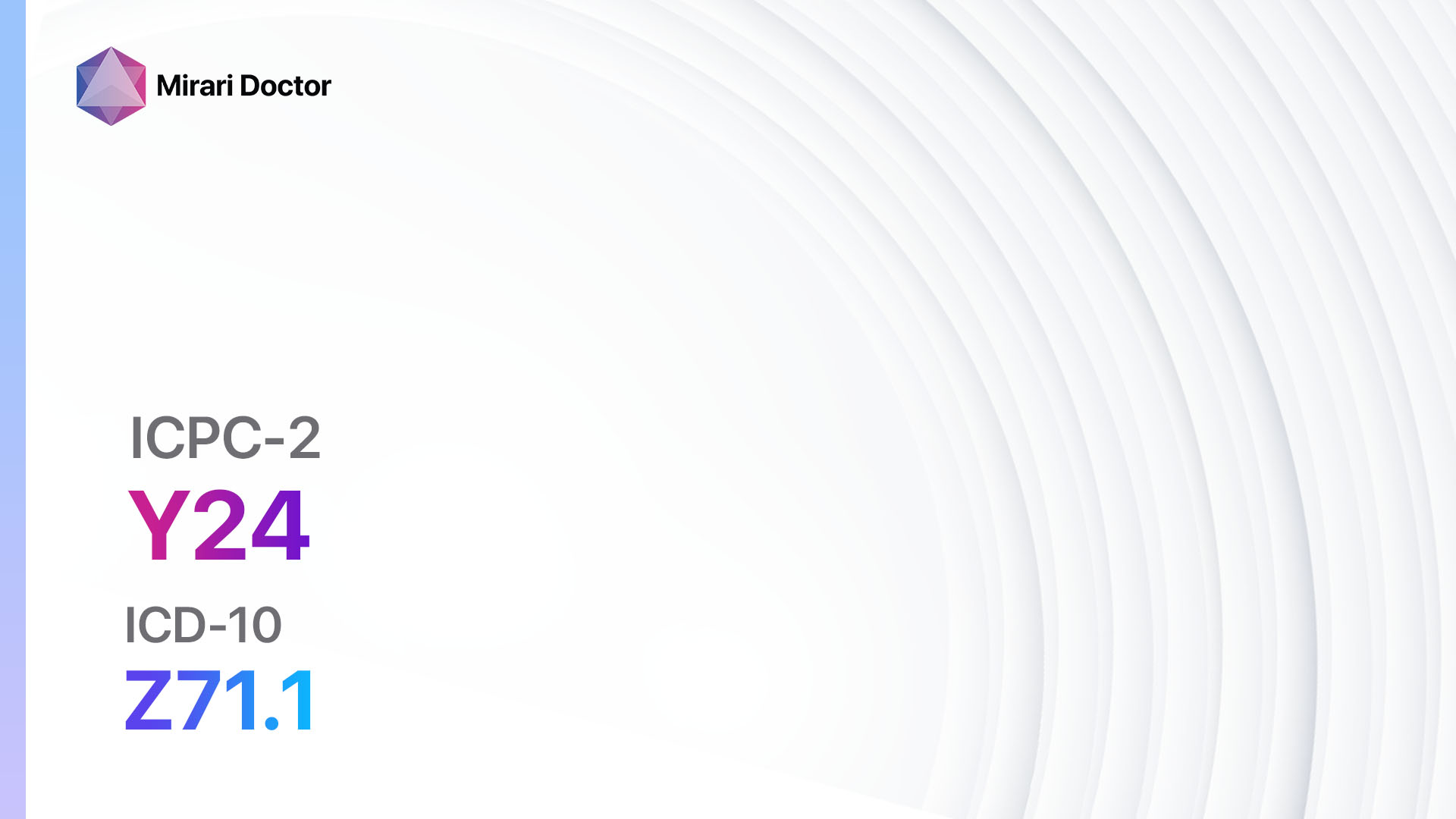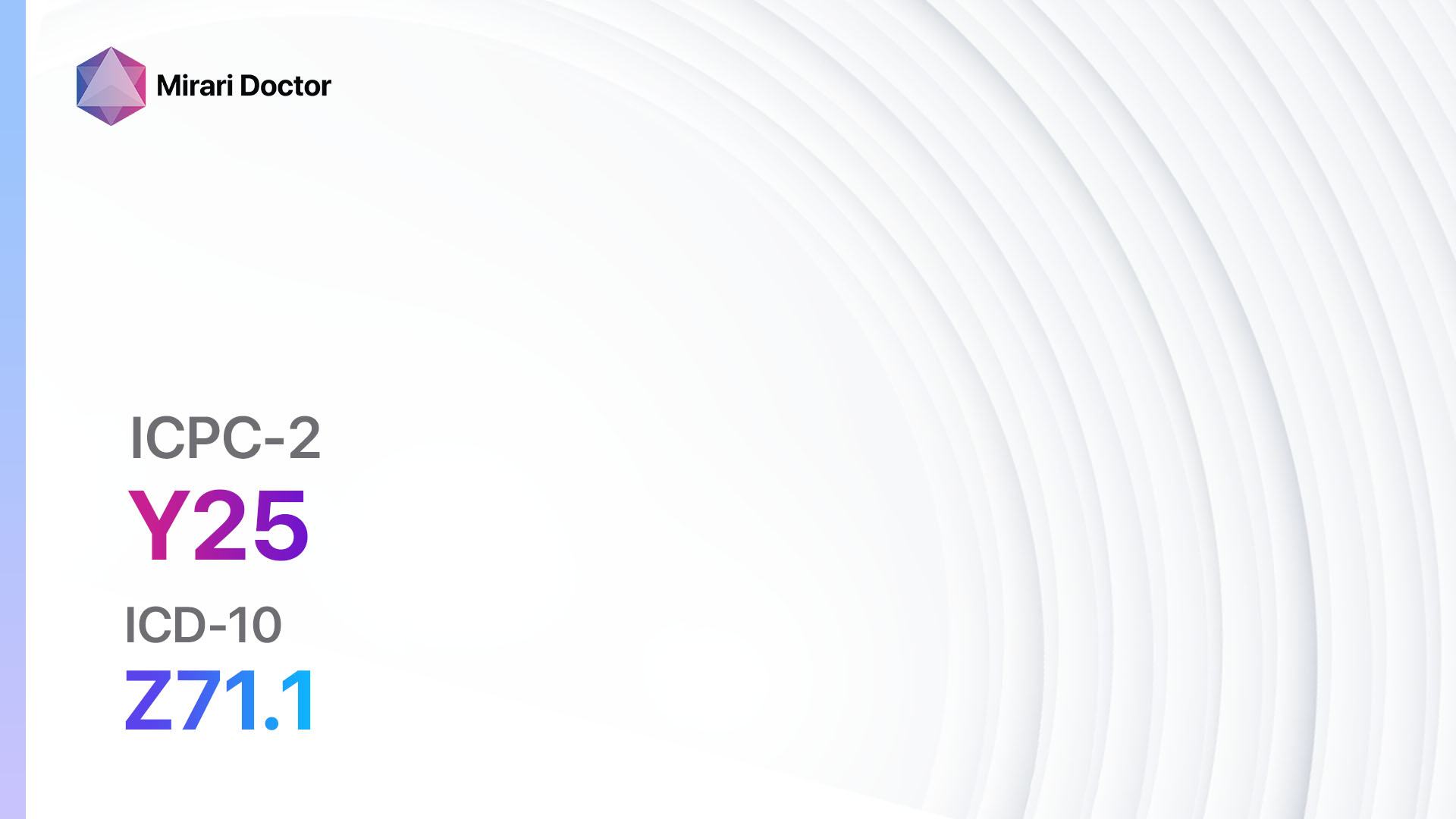
Introduction
Fear of sexually transmitted diseases (STDs) is a common concern among males. This fear can stem from a lack of knowledge about STDs, misconceptions, or personal experiences[1]. It is important to address this fear and provide accurate information to alleviate anxiety and promote safe sexual practices. This guide aims to provide a comprehensive approach to diagnosing and managing fear of STDs in males.
Codes
- ICPC-2 Code: Y25 Fear of sexually transmitted disease male[2]
- ICD-10 Code: Z71.1 Person with feared complaint in whom no diagnosis is made[3]
Symptoms
- Fear of contracting a sexually transmitted disease: This fear may manifest as anxiety, worry, or avoidance of sexual activity.
- Intrusive thoughts or images related to STDs: Individuals may experience persistent and distressing thoughts or mental images of contracting an STD.
- Avoidance behaviors: Individuals may avoid sexual activity or engage in excessive protective measures to prevent STD transmission.
- Hypervigilance: Individuals may constantly monitor their own and their partner’s health for signs or symptoms of STDs[4].
Causes
- Lack of knowledge or misinformation about STDs: Limited understanding about how STDs are transmitted, prevented, and treated can contribute to fear.
- Personal experiences or trauma: Previous encounters with STDs or witnessing the consequences of STDs can lead to fear and anxiety.
- Cultural or societal influences: Societal stigma, negative attitudes, or moral judgments surrounding STDs can increase fear and anxiety[5].
Diagnostic Steps
Medical History
- Conduct a comprehensive medical history to gather relevant patient information, including:
- Sexual history: Assess the patient’s sexual practices, number of partners, and use of protective measures.
- Previous STD history: Determine if the patient has had any previous STD diagnoses or encounters.
- Family history: Inquire about any family history of STDs or related conditions.
- Psychosocial history: Explore any past traumatic experiences or psychological factors that may contribute to fear of STDs[6].
Physical Examination
- Perform a thorough physical examination, focusing on:
- Genital examination: Assess for any visible signs or symptoms of STDs, such as lesions, discharge, or inflammation.
- Inguinal lymph nodes: Palpate the inguinal lymph nodes for any enlargement or tenderness, which may indicate an ongoing infection[7].
Laboratory Tests
- STD testing: Offer comprehensive STD testing to alleviate anxiety and provide reassurance. This may include:
- Blood tests: Check for the presence of antibodies or antigens associated with common STDs such as HIV, syphilis, and hepatitis.
- Urine tests: Screen for chlamydia and gonorrhea.
- Swab tests: Collect samples from genital, anal, or oral areas to test for specific STDs as needed[8].
Diagnostic Imaging
- Diagnostic imaging is not typically necessary for fear of STDs. However, if physical examination findings suggest other underlying conditions, imaging modalities such as ultrasound, CT scans, or MRIs may be indicated to further evaluate the suspected pathology[9].
Other Tests
- Psychological assessment: Consider referral to a mental health professional for a comprehensive psychological assessment if fear of STDs is significantly impacting the patient’s daily life or causing significant distress[10].
Follow-up and Patient Education
- Schedule follow-up appointments to review test results and provide patient education. This may include:
- Explanation of test results: Interpret and explain the meaning of negative or positive test results.
- Discussion on safe sexual practices: Educate the patient on methods to prevent STD transmission, such as consistent condom use and regular STD testing.
- Addressing misconceptions: Correct any misconceptions or myths about STDs that may contribute to fear.
- Referral to support resources: Provide information on support groups or counseling services for individuals struggling with fear of STDs.
Possible Interventions
Traditional Interventions
Medications:
Top 5 drugs for Fear of STDs in males:
- Selective Serotonin Reuptake Inhibitors (SSRIs) (e.g., Fluoxetine, Sertraline):
- Cost: Generic versions can range from $10 to $100/month.
- Contraindications: Hypersensitivity to SSRIs, concomitant use with monoamine oxidase inhibitors (MAOIs).
- Side effects: Nausea, headache, sexual dysfunction.
- Severe side effects: Serotonin syndrome, suicidal thoughts.
- Drug interactions: MAOIs, other serotonergic drugs.
- Warning: SSRIs may take several weeks to reach full effectiveness.
- Benzodiazepines (e.g., Alprazolam, Diazepam):
- Cost: Generic versions can range from $10 to $50/month.
- Contraindications: Acute narrow-angle glaucoma, severe respiratory insufficiency.
- Side effects: Sedation, dizziness, impaired coordination.
- Severe side effects: Respiratory depression, paradoxical reactions.
- Drug interactions: Other central nervous system depressants, opioids.
- Warning: Benzodiazepines may cause dependence and withdrawal symptoms with long-term use.
- Cognitive-Behavioral Therapy (CBT):
- Cost: Varies depending on the therapist and number of sessions. Average cost ranges from $75 to $200 per session.
- Contraindications: None.
- Side effects: None.
- Severe side effects: None.
- Drug interactions: None.
- Warning: CBT requires active participation and commitment from the patient.
- Exposure Therapy:
- Cost: Varies depending on the therapist and number of sessions. Average cost ranges from $75 to $200 per session.
- Contraindications: None.
- Side effects: Temporary increase in anxiety during exposure sessions.
- Severe side effects: None.
- Drug interactions: None.
- Warning: Exposure therapy should be conducted by a trained mental health professional.
- Group Therapy:
- Cost: Varies depending on the therapist and number of sessions. Average cost ranges from $50 to $150 per session.
- Contraindications: None.
- Side effects: None.
- Severe side effects: None.
- Drug interactions: None.
- Warning: Group therapy may not be suitable for all individuals and may require active participation.
Alternative Drugs:
- Beta-Blockers (e.g., Propranolol): May help reduce anxiety symptoms associated with fear of STDs. Cost: Generic versions can range from $10 to $50/month.
- Antidepressants (e.g., Venlafaxine, Duloxetine): May be used for anxiety management in individuals with comorbid depressive symptoms. Cost: Generic versions can range from $10 to $100/month.
- Anxiolytics (e.g., Buspirone): Non-benzodiazepine anxiolytic medication that may be used for anxiety management. Cost: Generic versions can range from $10 to $50/month.
- Antipsychotics (e.g., Quetiapine): May be used for severe anxiety symptoms or when other interventions are ineffective. Cost: Generic versions can range from $10 to $100/month.
- Herbal Supplements (e.g., Valerian Root, Chamomile): Some herbal supplements may have calming effects and help reduce anxiety symptoms. Cost: Varies depending on the specific supplement.
Surgical Procedures:
- Surgical procedures are not typically indicated for the treatment of fear of STDs in males.
Alternative Interventions
- Counseling and Psychotherapy: Talk therapy with a mental health professional can help address and manage fear of STDs. Cost: Varies depending on the therapist and number of sessions. Average cost ranges from $75 to $200 per session.
- Sex Education and Counseling: Comprehensive sex education and counseling can provide accurate information and address misconceptions about STDs. Cost: Varies depending on the provider and number of sessions. Average cost ranges from $50 to $150 per session.
- Support Groups: Joining support groups or online communities for individuals with fear of STDs can provide a sense of validation, support, and shared experiences. Cost: Varies depending on the group or community. Some may be free, while others may require membership fees.
- Mindfulness and Relaxation Techniques: Practicing mindfulness meditation, deep breathing exercises, or progressive muscle relaxation can help reduce anxiety and promote a sense of calm. Cost: Free or minimal cost for instructional materials or guided meditation apps.
- Self-Help Resources: Utilizing self-help books, online resources, or mobile applications specifically designed to address fear and anxiety related to STDs can provide additional support and coping strategies. Cost: Varies depending on the resource, with many free options available.
Lifestyle Interventions
- Healthy Sexual Practices: Encourage the adoption of safe sexual practices, such as consistent condom use, regular STD testing, and open communication with sexual partners. Cost: Varies depending on the availability and cost of condoms and STD testing services.
- Regular Exercise: Engaging in regular physical activity can help reduce anxiety and improve overall well-being. Cost: Varies depending on the chosen form of exercise (e.g., gym membership, sports equipment).
- Stress Management: Encourage the use of stress management techniques, such as regular exercise, relaxation exercises, or engaging in hobbies and activities that promote relaxation. Cost: Free or minimal cost for instructional materials or guided meditation apps.
- Healthy Diet: Promote a balanced diet rich in fruits, vegetables, whole grains, and lean proteins to support overall health and well-being. Cost: Varies depending on individual food choices and preferences.
- Avoidance of Risky Sexual Behaviors: Educate individuals on the importance of avoiding risky sexual behaviors, such as unprotected sex or multiple sexual partners. Cost: None.
It is important to note that the cost ranges provided are approximate and may vary depending on the location and availability of the interventions. It is recommended to consult with healthcare professionals or reputable sources for accurate and up-to-date cost information.
Mirari Cold Plasma Alternative Intervention
Understanding Mirari Cold Plasma
- Safe and Non-Invasive Treatment: Mirari Cold Plasma is a safe and non-invasive treatment option for various skin conditions. It does not require incisions, minimizing the risk of scarring, bleeding, or tissue damage.
- Efficient Extraction of Foreign Bodies: Mirari Cold Plasma facilitates the removal of foreign bodies from the skin by degrading and dissociating organic matter, allowing easier access and extraction.
- Pain Reduction and Comfort: Mirari Cold Plasma has a local analgesic effect, providing pain relief during the treatment, making it more comfortable for the patient.
- Reduced Risk of Infection: Mirari Cold Plasma has antimicrobial properties, effectively killing bacteria and reducing the risk of infection.
- Accelerated Healing and Minimal Scarring: Mirari Cold Plasma stimulates wound healing and tissue regeneration, reducing healing time and minimizing the formation of scars.
Mirari Cold Plasma Prescription
Video instructions for using Mirari Cold Plasma Device – Y25 Fear of sexually transmitted disease male (ICD-10:Z71.1)
| Mild | Moderate | Severe |
| Mode setting: 1 (Infection) Location: 0 (Localized) Morning: 15 minutes, Evening: 15 minutes |
Mode setting: 1 (Infection) Location: 0 (Localized) Morning: 30 minutes, Lunch: 30 minutes, Evening: 30 minutes |
Mode setting: 1 (Infection) Location: 0 (Localized) Morning: 30 minutes, Lunch: 30 minutes, Evening: 30 minutes |
| Mode setting: 2 (Wound Healing) Location: 0 (Localized) Morning: 15 minutes, Evening: 15 minutes |
Mode setting: 2 (Wound Healing) Location: 0 (Localized) Morning: 30 minutes, Lunch: 30 minutes, Evening: 30 minutes |
Mode setting: 2 (Wound Healing) Location: 0 (Localized) Morning: 30 minutes, Lunch: 30 minutes, Evening: 30 minutes |
| Mode setting: 5 (Prostatitis Therapy) Location: 2 (Prostate & Uterus) Morning: 15 minutes, Evening: 15 minutes |
Mode setting: 5 (Prostatitis Therapy) Location: 2 (Prostate & Uterus) Morning: 30 minutes, Lunch: 30 minutes, Evening: 30 minutes |
Mode setting: 5 (Prostatitis Therapy) Location: 2 (Prostate & Uterus) Morning: 30 minutes, Lunch: 30 minutes, Evening: 30 minutes |
| Mode setting: 7 (Immunotherapy) Location: 1 (Sacrum) Morning: 15 minutes, Evening: 15 minutes |
Mode setting: 7 (Immunotherapy) Location: 1 (Sacrum) Morning: 30 minutes, Lunch: 30 minutes, Evening: 30 minutes |
Mode setting: 7 (Immunotherapy) Location: 1 (Sacrum) Morning: 30 minutes, Lunch: 30 minutes, Evening: 30 minutes |
| Total Morning: 60 minutes approx. $10 USD, Evening: 60 minutes approx. $10 USD |
Total Morning: 120 minutes approx. $20 USD, Lunch: 120 minutes approx. $20 USD, Evening: 120 minutes approx. $20 USD, |
Total Morning: 120 minutes approx. $20 USD, Lunch: 120 minutes approx. $20 USD, Evening: 120 minutes approx. $20 USD, |
| Usual treatment for 7-60 days approx. $140 USD – $1200 USD | Usual treatment for 6-8 weeks approx. $2,520 USD – $3,360 USD |
Usual treatment for 3-6 months approx. $5,400 USD – $10,800 USD
|
 |
|
Use the Mirari Cold Plasma device to treat Fear sexually transmitted dis. male effectively.
WARNING: MIRARI COLD PLASMA IS DESIGNED FOR THE HUMAN BODY WITHOUT ANY ARTIFICIAL OR THIRD PARTY PRODUCTS. USE OF OTHER PRODUCTS IN COMBINATION WITH MIRARI COLD PLASMA MAY CAUSE UNPREDICTABLE EFFECTS, HARM OR INJURY. PLEASE CONSULT A MEDICAL PROFESSIONAL BEFORE COMBINING ANY OTHER PRODUCTS WITH USE OF MIRARI.
Step 1: Cleanse the Skin
- Start by cleaning the affected area of the skin with a gentle cleanser or mild soap and water. Gently pat the area dry with a clean towel.
Step 2: Prepare the Mirari Cold Plasma device
- Ensure that the Mirari Cold Plasma device is fully charged or has fresh batteries as per the manufacturer’s instructions. Make sure the device is clean and in good working condition.
- Switch on the Mirari device using the power button or by following the specific instructions provided with the device.
- Some Mirari devices may have adjustable settings for intensity or treatment duration. Follow the manufacturer’s instructions to select the appropriate settings based on your needs and the recommended guidelines.
Step 3: Apply the Device
- Place the Mirari device in direct contact with the affected area of the skin. Gently glide or hold the device over the skin surface, ensuring even coverage of the area experiencing.
- Slowly move the Mirari device in a circular motion or follow a specific pattern as indicated in the user manual. This helps ensure thorough treatment coverage.
Step 4: Monitor and Assess:
- Keep track of your progress and evaluate the effectiveness of the Mirari device in managing your Fear sexually transmitted dis. male. If you have any concerns or notice any adverse reactions, consult with your health care professional.
Note
This guide is for informational purposes only and should not replace the advice of a medical professional. Always consult with your healthcare provider or a qualified medical professional for personal advice, diagnosis, or treatment. Do not solely rely on the information presented here for decisions about your health. Use of this information is at your own risk. The authors of this guide, nor any associated entities or platforms, are not responsible for any potential adverse effects or outcomes based on the content.
Mirari Cold Plasma System Disclaimer
- Purpose: The Mirari Cold Plasma System is a Class 2 medical device designed for use by trained healthcare professionals. It is registered for use in Thailand and Vietnam. It is not intended for use outside of these locations.
- Informational Use: The content and information provided with the device are for educational and informational purposes only. They are not a substitute for professional medical advice or care.
- Variable Outcomes: While the device is approved for specific uses, individual outcomes can differ. We do not assert or guarantee specific medical outcomes.
- Consultation: Prior to utilizing the device or making decisions based on its content, it is essential to consult with a Certified Mirari Tele-Therapist and your medical healthcare provider regarding specific protocols.
- Liability: By using this device, users are acknowledging and accepting all potential risks. Neither the manufacturer nor the distributor will be held accountable for any adverse reactions, injuries, or damages stemming from its use.
- Geographical Availability: This device has received approval for designated purposes by the Thai and Vietnam FDA. As of now, outside of Thailand and Vietnam, the Mirari Cold Plasma System is not available for purchase or use.
References
- Mahajan BB, Shishak M. An approach to venerophobia in males. Indian J Sex Transm Dis AIDS. 2017;38(1):103-106.
- World Organization of Family Doctors (WONCA). International Classification of Primary Care, Second edition (ICPC-2). Oxford University Press, 1998.
- World Health Organization. International Statistical Classification of Diseases and Related Health Problems, 10th Revision (ICD-10). Geneva: WHO, 2019.
- Iwata K, Katsuda Y. Somatic symptoms after sexual behavior with fear of four sexually transmitted diseases: A proposal of novel disorder. J Family Med Prim Care. 2016;5(3):706-708.
- Hope Across The Globe. The Impact of STDs on Mental Health. Available at: https://hopeacrosstheglobe.org/the-impact-of-stds-on-mental-health/
- Hatzimouratidis K, Giuliano F, Moncada I, et al. EAU guidelines on erectile dysfunction, premature ejaculation, penile curvature and priapism. Eur Urol. 2016;70(2):e1-e17.
- Bhasin S, Cunningham GR, Hayes FJ, et al. Testosterone therapy in men with androgen deficiency syndromes: an Endocrine Society clinical practice guideline. J Clin Endocrinol Metab. 2010;95(6):2536-2559.
- Centers for Disease Control and Prevention. Sexually Transmitted Diseases (STDs). Available at: https://www.cdc.gov/std/
- Cokkinos DD, Antypa E, Tserotas P, et al. Emergency ultrasound of the scrotum: A review of the commonest pathologic conditions. Curr Probl Diagn Radiol. 2011;40(1):1-14.
- Rosen RC, Riley A, Wagner G, Osterloh IH, Kirkpatrick J, Mishra A. The international index of erectile function (IIEF): a multidimensional scale for assessment of erectile dysfunction. Urology. 1997;49(6):822-830.
Related articles
Made in USA


